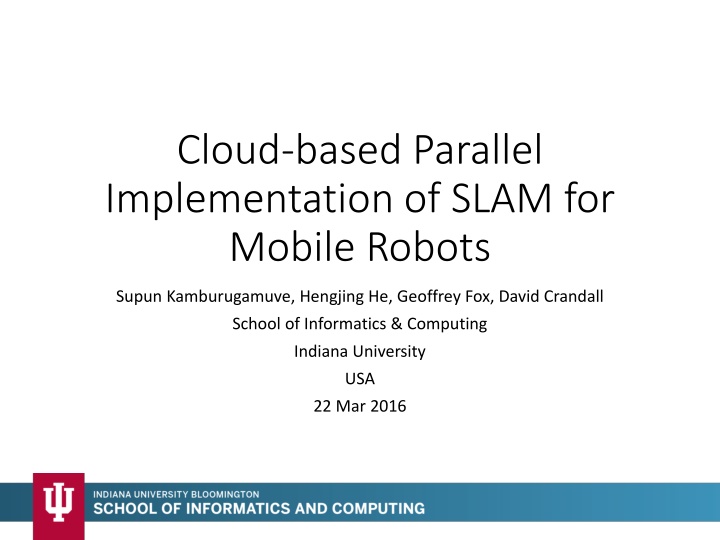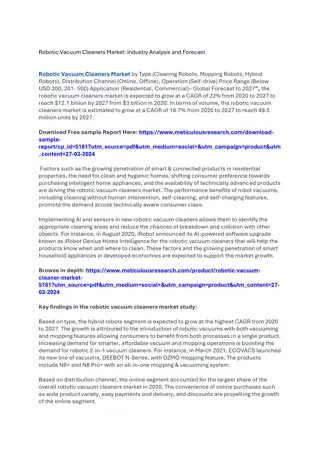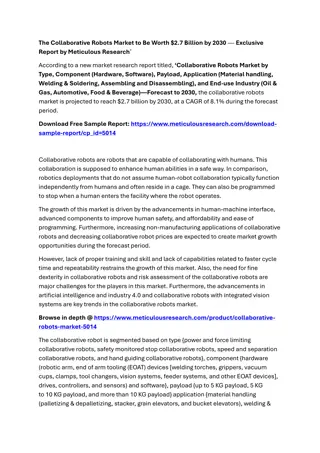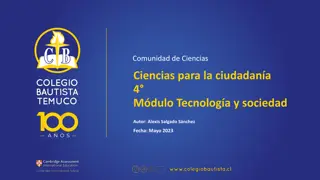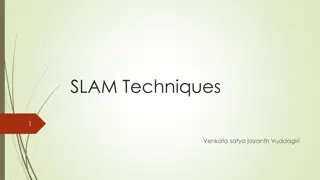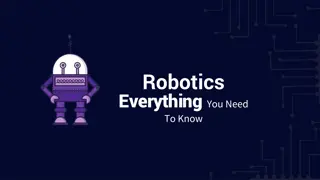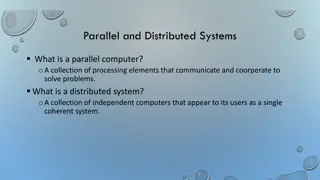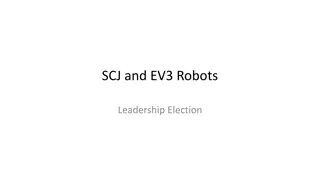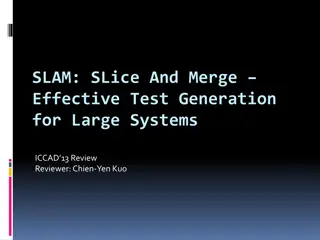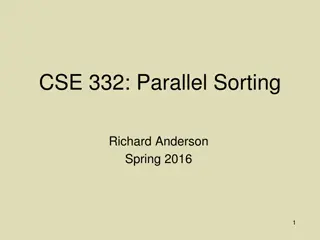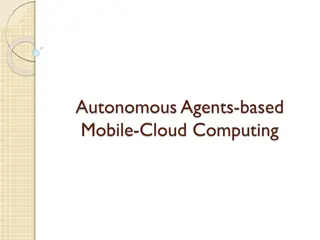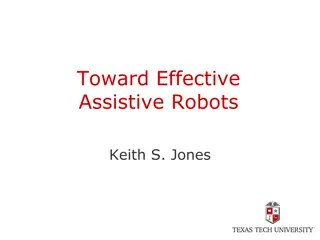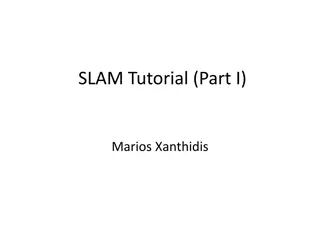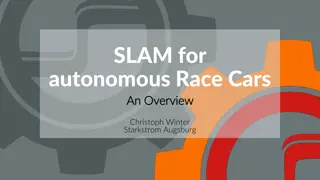Cloud-based Parallel Implementation of SLAM for Mobile Robots
This research focuses on a cloud-based parallel implementation of Simultaneous Localization and Mapping (SLAM) for mobile robots. It explores the use of cloud computing to enhance the efficiency and accuracy of SLAM algorithms, enabling robots to build maps and estimate their positions simultaneously. The study delves into cloud DIKW for robotics, Apache Storm for stream processing, and particle filtering-based SLAM algorithms. Additionally, it discusses the application of algorithms in optimizing robot trajectory and map building. The overall goal is to improve the performance of SLAM systems through parallel cloud-based processing.
Download Presentation

Please find below an Image/Link to download the presentation.
The content on the website is provided AS IS for your information and personal use only. It may not be sold, licensed, or shared on other websites without obtaining consent from the author.If you encounter any issues during the download, it is possible that the publisher has removed the file from their server.
You are allowed to download the files provided on this website for personal or commercial use, subject to the condition that they are used lawfully. All files are the property of their respective owners.
The content on the website is provided AS IS for your information and personal use only. It may not be sold, licensed, or shared on other websites without obtaining consent from the author.
E N D
Presentation Transcript
Cloud-based Parallel Implementation of SLAM for Mobile Robots Supun Kamburugamuve, Hengjing He, Geoffrey Fox, David Crandall School of Informatics & Computing Indiana University USA 22 Mar 2016
Simultaneous Localization and Mapping (SLAM) Simultaneously Building a map and estimating the robot position with sensor errors Map Built from Robot data Robot with a Laser Range Finder
Cloud DIKW for Robotics (Data, Information, Knowledge and Wisdom) High-level Architecture Detailed Architecture
Apache Storm The Stream processing model is a graph of stream processing nodes connected through streams of events. Topology User Graph Storm Programming Model Execution graph Architecture http://storm.apache.org/
Particle Filtering Based SLAM Estimating the posterior ?(?1:?,?|?1:?,?1:? 1) where ?1:?= ?1, ,?? is the trajectory of the robot m is the map ?1:?= ?1, ,?? are the laser readings observed ?1:? 1= ?1, ,?? 1 are the odometer measurements. ?(?1:?,?|?1:?,?1:? 1) = ? ? ?1:?,?1:??(?1:?|?1:?,?1:? 1) The above factorization first estimates the position of the robot given the observations, and then calculates the map using the trajectory of the robot. Algorithm: Grisetti, Giorgio, Cyrill Stachniss, and Wolfram Burgard. "Improved techniques for grid mapping with rao-blackwellized particle filters." Robotics, IEEE Transactions on 23, no. 1 (2007): 34-46.
Algorithm The particle filter maintains a set of particles, with each one containing a probable map of the environment and a possible trajectory of the robot. For each particle: (?)= ?? 1 (?) ?? 1, where is standard pose 1. Make an initial guess ?? compounding operator. The algorithm incorporates the motion model parameters of the robot when calculating the initial guess. (?) using the 2. Use the ScanMatching algorithm to optimize initial guess ?? ?? 1 3. Update the weight of the particle (?) of the particle is updated with the new position ?? (?)and laser reading ??. If the ScanMatching fails, use the previous guess. (?) and ??. 4. The map ?? Resample particles with replacement according to weights
Streaming Application System overview Distributed Streaming Computation
Performance of Parallel vs Serial Parallel behavior of the algorithm with 640 laser readings (left) and 180 readings (right). For each dataset, the top graph shows mean times and the bottom graph shows the speedup
Analysis of Performance I/O, garbage collection, and Compute time Overhead of imbalanced parallel computation
Improved Performance Reduced parallel overhead Improved performance
Challenges & Future Directions Cloud based distributed streaming frameworks are not adequate Improved communication to reduce overhead Supun Kamburugamuve, Saliya Ekanayake, Milinda Pathirage, Geoffrey Fox, Towards High Performance Processing of Streaming Data in Large Data Centers Technical Report January 26 2016, to be published in proceedings of HPBDC 2016 IEEE International Workshop on High-Performance Big Data Computing in conjunction with The 30th IEEE International Parallel and Distributed Processing Symposium (IPDPS 2016), Scheduling for real time applications Scaling to thousands of applications is difficult because of APIs and scheduling Applications Hengjing He, Supun Kamburugamuve, and G.C. Fox, Cloud based real-time multi-robot collision avoidance for swarm robotics Technical Report, May 7, 2015. To be published in International Journal of Grid and Distributed Computing.
